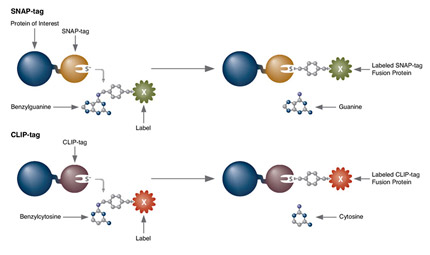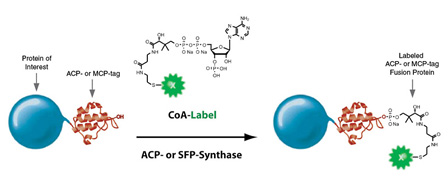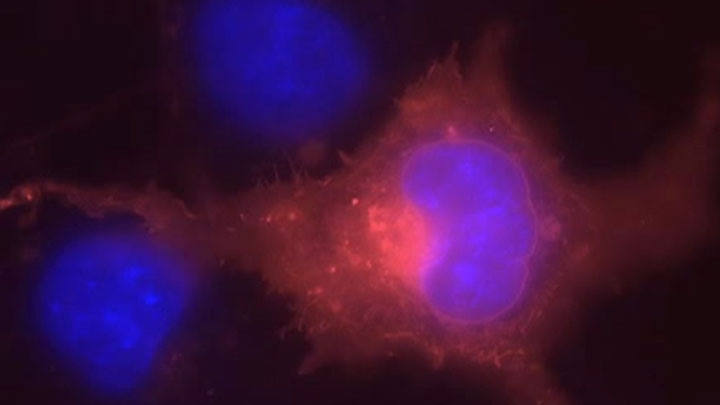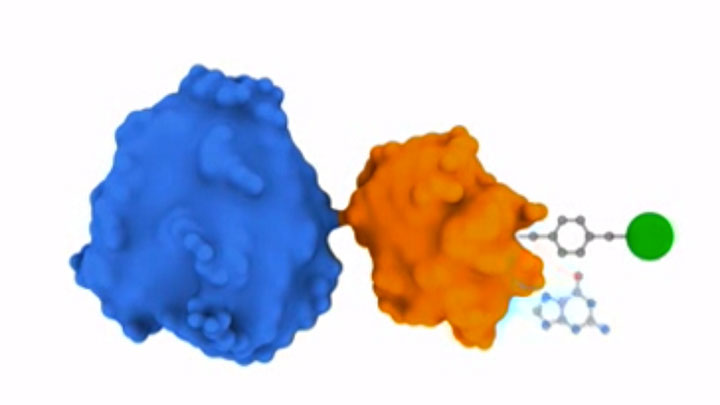
Cell Imaging
Choose Type:
- Cellular Labeling (E9100)
- Cellular Labeling (S9103)
- Cellular Labeling (S9104)
- Cellular Labeling (S9105)
- Cellular Labeling (S9107)
- Cellular Labeling (S9109)
- Cellular Labeling (S9110)
- Cellular Labeling (S9112)
- Cellular Labeling (S9124)
- Cellular Labeling (S9126)
- Cellular Labeling (S9129)
- Cellular Labeling (S9131)
- Cellular Labeling (S9132)
- Cellular Labeling (S9134)
- Cellular Labeling (S9136)
- Cellular Labeling (S9137)
- Cellular Labeling (S9139)
- Cellular Labeling (S9142)
- Cellular Labeling (S9216)
- Cellular Labeling (S9217)
- Cellular Labeling (S9218)
- Cellular Labeling (S9219)
- Cellular Labeling (S9232)
- Cellular Labeling (S9233)
- Cellular Labeling (S9234)
- Cloning of ACP-tag Fusions in pACP-tag(m)-2 (N9322)
- Cloning of CLIP-tag Fusions in pCLIPf (N9215)
- Cloning of MCP-tag Fusions in pMCP-tag(m) Vector (N9317)
- CoA 488 (S9348)
- Expression of ACP-ADRβ2 Fusions (N9321)
- Expression of ACP-tag Fusions (N9322)
- Expression of CLIP-tag Fusions (N9215)
- Expression of MCP Fusions (N9317)
- Expression of MCP-GPI (N9320)
- Cellular Labeling (S9101)
- Instructions for Cellular Labeling (S9215)
- Instructions for Use with ACP Synthase (P9301)
- Instructions for Use with SFP Synthase (P9302)
- Labeling CLIP-tag Fusion Proteins with BC-substrates (S9236)
- Labeling Mammalian Cell Lysates (S9147)
- Labeling of Proteins in vitro (S9110)
- Labeling of Proteins in vitro (P9302)
- Labeling of Proteins in vitro (S9103)
- Labeling of Proteins in vitro (S9104)
- Labeling of Proteins in vitro (S9105)
- Labeling of Proteins in vitro (S9106)
- Labeling of Proteins in vitro (S9107)
- Labeling of Proteins in vitro (S9109)
- Labeling of Proteins in vitro (S9137)
- Labeling of Proteins in vitro (S9143)
- Labeling of Proteins in vitro (S9216)
- Labeling of Proteins in vitro (S9217)
- Labeling of Proteins in vitro (S9218)
- Labeling of Proteins in vitro (S9219)
- Labeling of Proteins in vitro (S9220)
- Labeling of Proteins in vitro (S9221)
- Labeling of Proteins in vitro (S9232)
- Labeling of Proteins in vitro (S9233)
- Labeling of Proteins in vitro (S9234)
- Labeling of Proteins in vitro (P9301)
- Instructions for Labeling of Proteins in vitro (S9348)
- Labeling of Proteins in vitro (S9101)
- Labeling of Proteins in vitro (S9351)
- Labeling on the Surface of Cells (S9349)
- Labeling on the Surface of Cells (S9350)
- Labeling on the Surface of Cells (S9351)
- Labeling Proteins in vitro (S9131)
- Labeling Proteins in vitro (S9112)
- Labeling Proteins in vitro (S9124)
- Labeling proteins in vitro (S9126)
- Labeling Proteins in vitro (S9129)
- Labeling Proteins in vitro (S9132)
- Labeling Proteins in vitro (S9134)
- Labeling Proteins in vitro (S9136)
- Labeling Proteins in vitro (S9139)
- Labeling Proteins in vitro (S9142)
- Labeling Proteins in vitro (S9147)
- Labeling SNAP-tag Fusion Proteins with BG-substrates (S9150)
- Labeling SNAP-tag Fusion Proteins with BG-substrates (S9151)
- Labeling SNAP-tag Purified Protein In Vitro (P9312)
- Protocol for Anti-SNAP-tag® Antibody (Polyclonal) (P9310)
- Use of SNAP-Cell Block with SNAP-Cell Substrates (E9100)
- Use with CLIP-tag substrates (S9220)
- View the video "Fluorescent Labeling of COS-7 Expressing SNAP-tag Fusion Proteins for Live Cell Imaging" in the Journal of Visualized Experiments (JoVE)
- Instructions for Cellular Labeling (E9200)
- Labeling Proteins in vitro (E9200)
- Labeling of Proteins in vitro (S9215)
- Cloning of SNAP-tag Fusions in pSNAPf (N9183)
- Cloning of SNAP-tag Fusions in pSNAP-tag(T7)-2 (N9181)
- Expression of SNAP-tag Fusions (N9181)
- Expression of SNAPf Fusions (N9183)
- Expression of SNAPf Fusions (N9185)
- Expression of SNAPf Fusions in SNAPf-H2B (N9186)
- Labeling of Proteins in vitro (S9349)
- Labeling of Proteins in vitro (S9350)
- Labeling SNAP-tag Fusion Proteins with BG-substrates (S9148)
- Protocol for Labeling SNAP-tag Fusion Proteins with BG-substrates (S9153)
- Cellular Labeling (S9221)
- Labeling of Proteins in vitro (E9100)
- Use with SNAP-Surface substrates (S9143)
- Reaction Conditions for Chemical Coupling (S9148)
- Reaction Conditions for Chemical Coupling (S9153)
- Use SNAP-Capture Magnetic Beads (S9145)
- Use SNAP-Capture Pull Down Resin (S9144)
- Expression of CLIPf-Cox8A (N9217)
- Expression of CLIPf-H2B (N9218)
- Reaction Conditions for Chemical coupling (S9150)
- Reaction Conditions for Chemical Coupling (S9151)
- Reaction Conditions for Chemical Coupling (S9236)
- Use with SNAP-Cell Substrates (S9106)
-
SNAP-tag® Technologies: Tools to Study Protein Function
Read about the NEB’s set of protein tools for the specific labeling (SNAP-, CLIP-, ACP- and MCP-tags) of fusion proteins.
- Cellular Imaging & Analysis Brochure
- Comparison of SNAP-tag®/CLIP-tag™ Technologies to GFP
- Labeling with SNAP-tag® Technology Troubleshooting Guide
Feature Articles
Brochures
Selection Tools
Troubleshooting Guides
- Maffei, M., Morelli, C., Graham, E., Patriarca, S., Donzelli, L., Doleschall, B., de Castro, Reis, F., Nocchi, L., Chadick, C.H., Reymond, L., Correa, I.R., Jr., Johnsson, K., Hackett, J.A., Heppenstall, P.A (2019) A ligand based system for receptor specific delivery of proteins Sci Rep; 9(1), 19214.. PubMedID: 31844114, DOI: 10.1038/s41598-019-55797-1
- Reuter, W.H., Masuch, T., Ke, N., Lenon, M., Radzinski, M., Van Loi, V., Ren, G., Riggs, P., Antelmann, H., Reichmann, D., Leichert, L.I., Berkmen, M (2019) Utilizing redox-sensitive GFP fusions to detect in vivo redox changes in a genetically engineered prokaryote Redox Biol; 26, 101280. PubMedID: 31450103, DOI: 10.1016/j.redox.2019.101280
- Carpinone, E.M., Li, Z., Mills, M.K., Foltz, C., Brannon, E.R., Carlow, C.K.S., Starai, V.J. (2018) Identification of putative effectors of the Type IV secretion system from the Wolbachia endosymbiont of Brugia malayi PLoS One; 13 (9), e0204736. PubMedID: 30261054, DOI: 10.1371/journal.pone.0204736
- Ke, N., Landgraf, D., Paulsson, J. and Berkmen, M. (2016) Visualization of Periplasmic and Cytoplasmic Proteins with a Self-Labeling Protein Tag. J Bacteriol; Jan 19;198(7), 1035-43. PubMedID: 26787765
- Clone and express once, then use with a variety of substrates
- Non-toxic to living cells
- Wide selection of fluorescent substrates
- Highly specific covalent labeling
- Simultaneous dual labeling
- Simultaneous dual protein labeling inside live cells
- Protein localization and translocation
- Pulse-chase experiments
- Receptor internalization studies
- Selective cell surface labeling
- Protein pull-down assays
- Protein detection in SDS-PAGE
- Flow cytometry
- High throughput binding assays in microtiter plates
- Biosensor interaction experiments
- FRET-based binding assays
- Single molecule labeling
- Super-resolution microscopy
- Small - Expressed tag is only 8 kDa (77aa)
- Versatile - ACP- and MCP-tagged fusions can be co-expressed and sequentially labeled for two color applications on cell surfaces
- Specific - Components remain exclusively extracellular, preventing intracellular labeling
- Precise - Label is covalently bound under biological conditions in a defined position
- Non-toxic - Substrates are non-toxic to living cells
- Selection - Choice of substrates available, including 488, 547, 647 nm and biotin
Products and content are covered by one or more patents, trademarks and/or copyrights owned or controlled by New England Biolabs, Inc (NEB). The use of trademark symbols does not necessarily indicate that the name is trademarked in the country where it is being read; it indicates where the content was originally developed. The use of this product may require the buyer to obtain additional third-party intellectual property rights for certain applications. For more information, please email busdev@neb.com.
This product is intended for research purposes only. This product is not intended to be used for therapeutic or diagnostic purposes in humans or animals.





